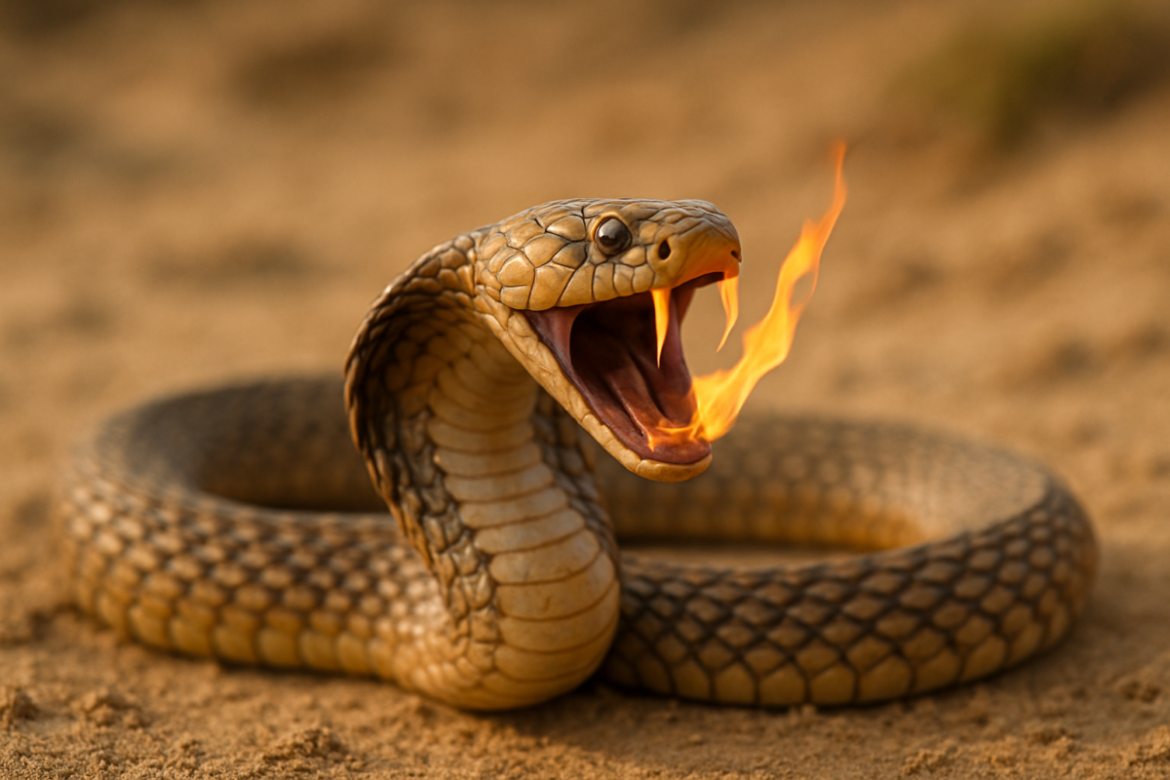Parshat Chukat: The Snake, the Silence, and the Secret of Redemption
This week’s Parshah, Parshat Chukat, brings together both heartbreak and healing. It contains the deaths of Miriam and Aharon, the decree against Moshe and Aharon that they will not enter the Land of Israel, and a mysterious episode involving deadly snakes and a copper serpent that heals. Beneath the surface of this strange narrative lies a profound spiritual teaching about silence, yearning, and the test of entering the Land of Israel.
Complaint at the Edge of Redemption
After Aharon’s passing on Hor HaHar—identified by the Midrash as a mountain with a smaller mountain atop it, located in present-day Petra—the Jewish people journeyed backward toward the Red Sea, circumventing Edom. This detour demoralized them. Already weary and still far from their goal, they felt that history was repeating itself. Once again, they seemed to be retreating instead of advancing toward the Promised Land.
This emotional collapse led to a familiar outburst: complaints. They spoke harshly against Hashem and Moshe, equating the two: “Why did You bring us out of Egypt to die in this wilderness? There is no bread, no water, and we’re sick of this manna!” Their complaint targeted the very sustenance that had miraculously sustained them—the manna—describing it as a food that would eventually erupt in their stomachs, Heaven forbid.
The Fiery Serpents and Their Spiritual Message
In response, Hashem sent nechashim (snakes) and serafim (burning serpents) to bite the people. Many died. The survivors quickly recognized their error and begged Moshe to intercede. Moshe, despite being the target of their complaints, immediately prayed on their behalf.
Hashem then commanded Moshe to fashion a saraf – a burning serpent – and mount it on a pole. Anyone bitten who gazed upon it would be healed. But Moshe, taking initiative, created a nechash nechoshet—a copper snake—instead. The Torah uses both terms, nechash and saraf, and the Zohar explains the distinction: the nechash represents the sin of speaking against Hashem; the saraf represents the sin of speaking against Moshe. Hashem instructed Moshe to create a saraf to emphasize the affront to Moshe’s own honor, but Moshe—choosing humility—responded with a nechash, identifying the deeper root: the damage caused by losing faith in Hashem.
The word nechash is made of two parts: Nun (50) and Chash (silence). The Nun represents the 50th Gate—Shaar HaNun, associated in Rebbe Nachman’s teachings with the Keter, the supernal crown and highest of the sefirot. The Keter grants access to the Infinite Light but tests a person by pushing them back. The proper response is chash—silence. The test of the Keter is to hold back, to trust, to remain quiet even in the face of pain and confusion. The people failed this test. Instead of internalizing the suffering and turning it into longing, they lashed out. The snake—the nechash—was both punishment and remedy, a reminder of the silence that could have drawn down the very light they needed.
Life constantly sends us tests that push us to the brink. The snake reminds us that silence in suffering is not weakness; it’s the gateway to the greatest light!
Lifting the Snake, Elevating the People
According to the Midrash Tanchuma, Moshe didn’t just set the copper snake on the pole. He first erected the pole and then threw the copper snake upward, and miraculously it wrapped itself around the pole and remained there. This act of throwing it upward symbolized the potential for the Jewish people to be uplifted again—through repentance and reconnection to Hashem.
But what did looking at the snake actually do? The Gemara in Rosh Hashanah asks: “Does a snake cause death or give life?” It answers that gazing at the snake prompted the people to lift their eyes to Heaven and subdue their hearts before their Father in Heaven. The snake wasn’t the source of healing—it was the trigger for introspection and teshuvah.
The Alshich HaKadosh reveals a hidden gem in the wording of the Torah. When Moshe placed the copper snake on the pole, the verse says vay’simehu al haness—“and he placed it on the pole.” The Hebrew words vay’simehu and haness contain within them additional four letters of Hashem’s name: Yud–Hei–Vav–Hei. This hidden name symbolizes the full rectification of the damage caused by speaking against Hashem. By looking at the nechash, they were reminded of what they had violated—and what they could reclaim.
The Real Test: Remaining Silent
Ultimately, this entire episode was about preparation for entering Eretz Yisrael. The Land of Israel is not just a place—it is the home of the Beit HaMikdash, the Kodesh HaKodashim, and the foundation stone from which the Infinite Light enters the world. To be worthy of such a place, one must be able to receive its light—through silence, faith, and inner strength.
Had the people remained silent in the face of challenge, they would have accessed the Keter—the 50th Gate—and drawn down the light needed to enter the Land. Instead, they failed. But the lesson remains: life constantly sends us tests that push us to the brink. The question is whether we will lash out—or hold back. Whether we’ll react—or turn inward in yearning. The snake reminds us that silence in suffering is not weakness; it’s the gateway to the greatest light.
Shabbat Shalom. May we pass our tests with silence, faith, and strength—and be worthy of the light that awaits on the other side.
Meir Elkabas

